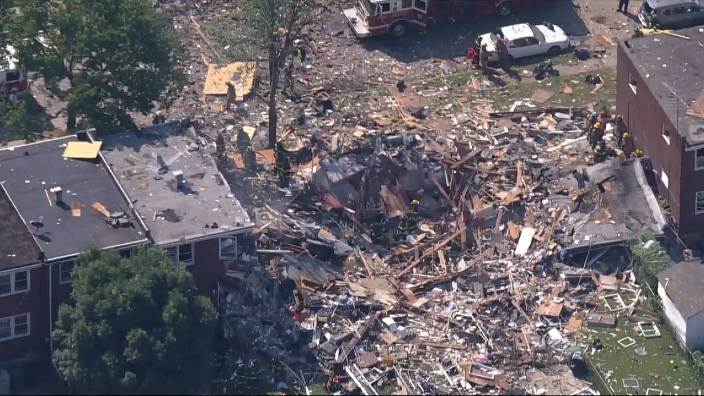
There have long been calls to speed up repair of Baltimore’s aging natural gas pipelines.
At least one person is dead and several more were left badly injured on Monday morning when an apparent natural gas explosion leveled three homes in a Baltimore neighborhood.
— Justin Fenton (@justin_fenton) August 10, 2020
Hundreds of rescue workers who converged on the scene managed to pull at least two people from the rubble. Along with the houses that were immediately destroyed, many others in the neighborhood suffered serious damage. Nearby residents also had to be evacuated.
When Latanya Heath heard her bay window shatter, she initially thought a rock from a lawnmower had struck it.
“When I came outside, I saw the house on the ground. It was chaos.” pic.twitter.com/dGcArE1roQ
— Colin Campbell ☀️ (@cmcampbell6) August 10, 2020
This home is facing the opppsite direction on other side of alley, blast blew out the window on the front side. They say the kitchen floor tiles are cracked and back door won’t open; they think it shifted the home pic.twitter.com/Ksr7hNd6Qq
— Justin Fenton (@justin_fenton) August 10, 2020
While the specific cause of the explosion remained unknown, by early afternoon many were turning their attention to Charm City’s aging natural gas pipelines. The Baltimore Sun reported:
“While the exact cause of the blasts are not immediately clear, many Baltimore-area gas lines are in serious need of repair – a project that could take (utility company) BGE at least two decades to complete… BGE, the nation’s oldest gas utility with origins dating to 1817, likely needs to replace thousands of miles of obsolete pipes.”
Indeed, the Sun ran an in-depth investigation of the city’s natural gas system in September 2019, reporting that “natural gas has been leaking out of aged pipes in and around Baltimore in recent years, likely diminishing the fossil fuel’s relative Earth-friendliness and creating hazards that can lead to explosions.”
Nearly two dozen natural gas leaks are discovered each day on average, BGE reported, with leaks increasing 75 percent from 2009 to 2016. The utility found more than 3,600 leaks in 2018 had “the potential of creating dangerous buildups of gas or were in or around homes.” Meanwhile, it received 30,000 calls about gas odors every year.
Officials attributed the leaks to the failures of pipe joints that had been built in the 1950s and 1960s. While workers are in the process of fixing them, repairs are moving so slow that officials told the Sun it would likely take two decades to complete the work.
Not surprisingly, there have been calls on the city to speed things up. But one official told the Sun that conducting the repairs faster would be “too expensive.”
“To basically rip up the entire city and replace these pipelines, that would ensure our leak rate would decrease substantially, but the question is at what cost?” said Jason Stanek, the chairman of the Maryland Public Service Commission.
What cost indeed.
Again, we don’t yet know what exactly caused Monday’s deadly explosion. But given what we know about Baltimore’s natural gas system, it does seem like this should be a moment to reflect on the real world consequences of continuing to delay desperately needed infrastructure investment.
Monday’s tragedy in Baltimore isn’t the only instance this year when infrastructure failure has caused major damage.
Back in May, a catastrophic dam failure in Midland, Mich., triggered massive flooding, destroying 2,500 homes and buildings and causing $200 million in damage.
United Steelworkers member Jim Varnum was among those displaced by the flooding, with his family forced to live in a camper after his home was destroyed. Varnum pinned the blame on America’s failing infrastructure, saying that “without the government putting emphasis on fixing our infrastructure—roads, dams, bridges, water systems, etc., — we’ve going to see more disasters like what happened to Midland and the surrounding area.”
People in D.C. circles often joke about “Infrastructure Week.” Policymakers are well versed in talking a big game about investing in infrastructure, only to fail to get the job done.
The flooding that took place in Midland – and possibly now the deadly explosion that happened in Baltimore on Monday – are the real life consequences that happen because of that failure to act.
